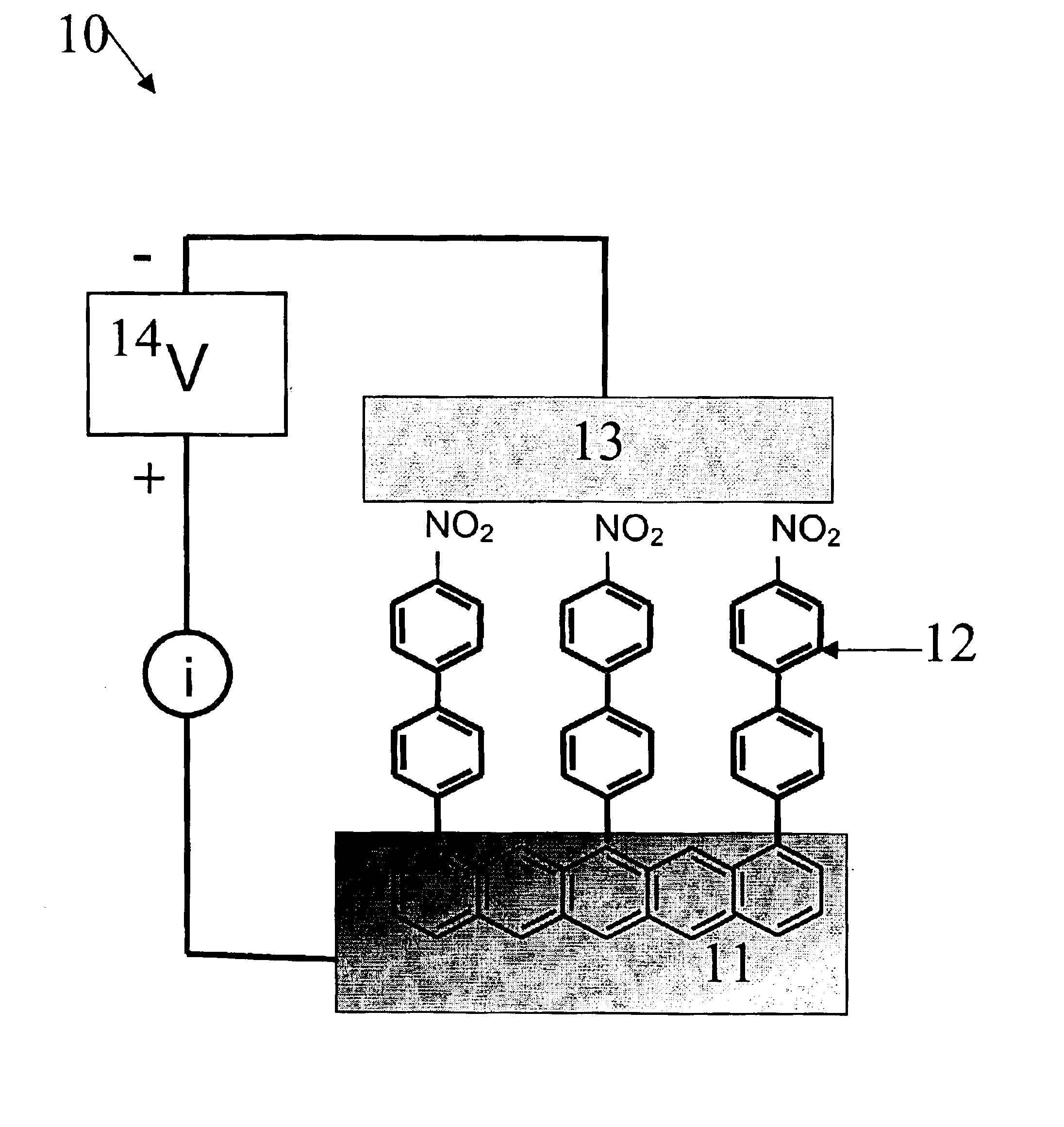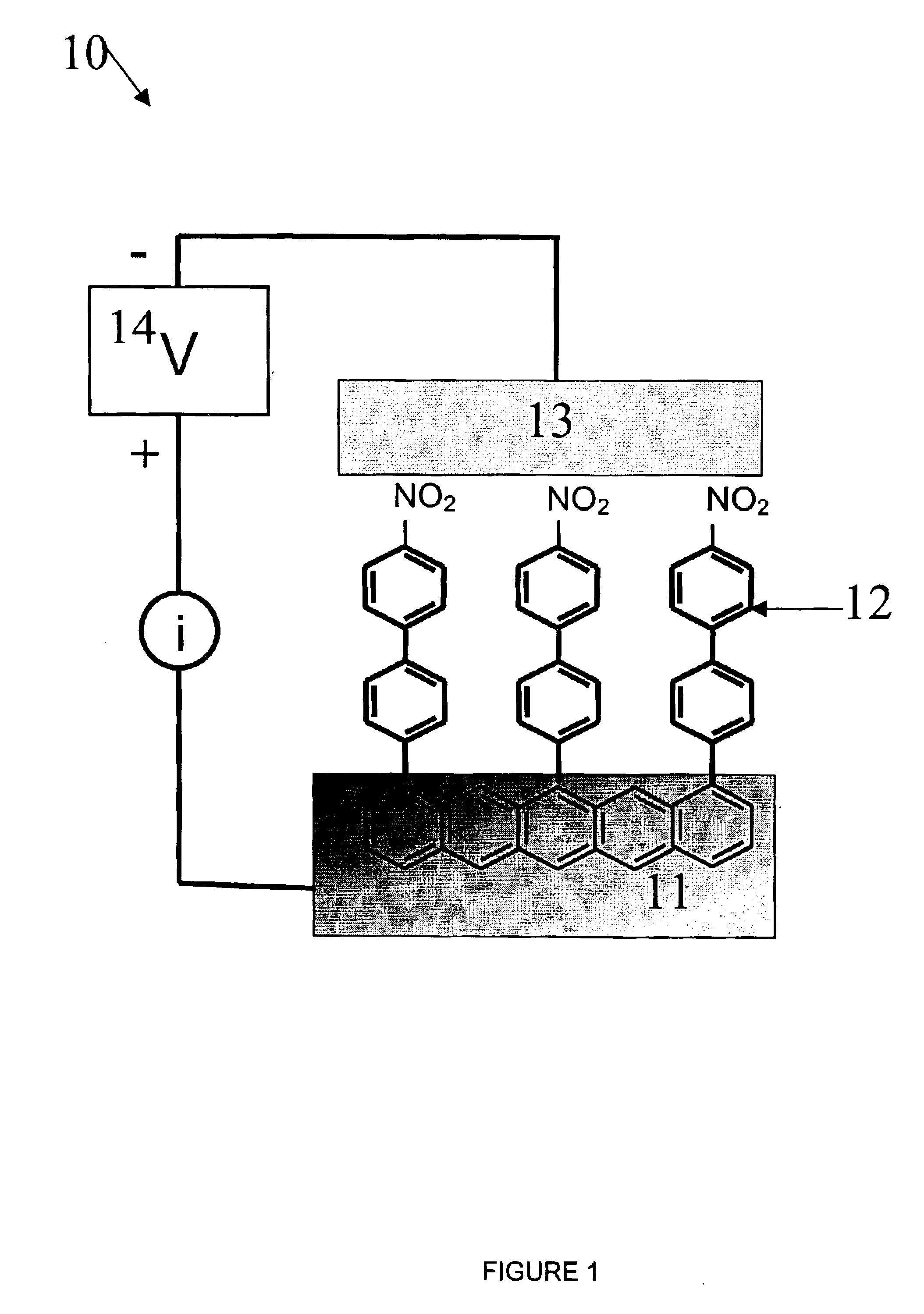Method for conductance switching in molecular electronic junctions
a technology of electronic junctions and conductance switching, which is applied in the direction of thermoelectric devices, solid-state devices, and nano-informatics. it can solve the problems of inability to meet the chemical requirements of a successful molecular switch, the inability to know the switch mechanism in most cases, and the formidable hurdles of practical utility
- Summary
- Abstract
- Description
- Claims
- Application Information
AI Technical Summary
Benefits of technology
Problems solved by technology
Method used
Image
Examples
Embodiment Construction
)
[0078]In accordance with the forgoing summary, the following presents a detailed description of the preferred embodiment of the invention that is currently considered to be the best mode.
[0079]Our approach is much simpler than the alternatives. Specifically, a molecule in our junctions is induced to “switch” by molecular rearrangement in response to a high electric field. Molecules such as nitroazobenzene, nitrobiphenyl, terphenyl, and diethylaminophenyl are aromatic when bonded to a carbon (and / or metal or silicon) surface, and the rings are generally twisted with respect to each other and the carbon substrate. In a high static electric field, these molecules rearrange to a quinoid structure, in a process analogous to a redox reaction, but without counterions or solvent. The quinoid structure is more conjugated than the original molecule, as judged by changes in bond length and increased polarizability. Stronger electronic coupling or orbitals across the quinoid structure presumab...
PUM
 Login to View More
Login to View More Abstract
Description
Claims
Application Information
 Login to View More
Login to View More - R&D
- Intellectual Property
- Life Sciences
- Materials
- Tech Scout
- Unparalleled Data Quality
- Higher Quality Content
- 60% Fewer Hallucinations
Browse by: Latest US Patents, China's latest patents, Technical Efficacy Thesaurus, Application Domain, Technology Topic, Popular Technical Reports.
© 2025 PatSnap. All rights reserved.Legal|Privacy policy|Modern Slavery Act Transparency Statement|Sitemap|About US| Contact US: help@patsnap.com



